When the water starts to cool every year, intelligent anglers grab a blade bait; this vintage lure is very simple in design—a metal blade with a section of molded lead.
The generic silver or gold mimic shad or you could try a modern blade bait with a realistic look and excellent paint finishes that resemble any number of baitfish.
Undoubtedly the mild temperatures had a lot to do with the crappie, bass, and other gamefish behaving atypically as it relates to fishing presentations and areas.
Blade baits for bass are fantastic for cold water techniques and other unfavorable fishing conditions.
What is a Blade Bait?
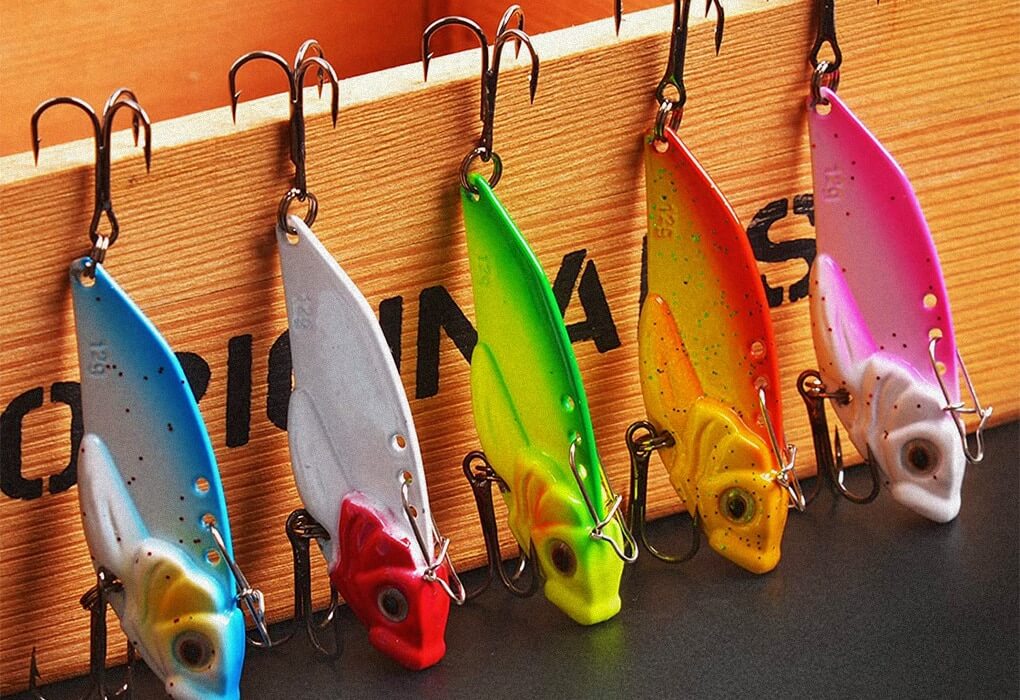
A blade bait or metal lipless crankbait has two sets of treble hooks, one at the front and the other at the back. Manufacturers design blade baits to use sound and vibration to cause fish to react instinctively with a reaction strike.
The blade bait has a weighted nose and a flat metal spoon. It vibrates on the retrieve and during the lift. Since blade baits are relatively heavy in relation to their size, they cast like bullets and reach the strike zone quickly.
They’re not to be confused with buzzbaits or spinnerbaits, which have “blades” or props. A blade bait is not a topwater lure.
How to Fish a Blade Bait
In this YouTube video, Anglers.com Community Coordinator Wesley Littlefield explains how he fishes blade baits in the winter.
You’ll find that most blade baits for bass have several line attachment points that anglers select according to their unique presentation.
There are many retrieves and presentations that function well with the blade bait; however, a lift and flutter similar to a jigging spoon is perhaps the best technique, to begin with.
Having said that, as you continue to fish, refine your retrieve based on the fish’s reactions.
For beginners, starting with a two-foot upward snap of the rod may be ideal; as you gain experience, you’ll find that short light hops of 6 inches function better.
Anglers typically abide by the rules of thumb that the colder the water, the slower and smaller your hops should be.
If you’re in the northern climates during late fall when the water reaches temperatures as low as 40 degrees, the blade bait works well even when you’re fishing in frigid temperatures.
Vertical
The rear-most line tie creates the most vibration and is best for vertical jigging; conversely, the forward-most line tie is conducive to less vibration—ideal for finesse, casting, and retrieving.
You can fish blade baits by casting out and working them back in or dropping them beneath the boat and fishing vertically.
The most popular application for vertical-jigging blade baits is to allow the lure to fall to the bottom; afterward, you can begin to impart action with subtle flicks of the rod—avoid making big sweeps of the rod.
Instead, lift the rod only enough to allow the blade to kick once or twice, then let it sink to the bottom again.
The fish will perceive this as a scuttling crawdad or a dying baitfish, and it is more likely to attract smallmouth, largemouth, walleye, lake trout, or any other game fish species.
Horizontal
You can also rig by putting hooks at the tail and nose of the lure to give a horizontal vibrating presentation; this will give the fish a completely different look.
Simply make a long cast and let it sink to the bottom. Then give the line some slack and make quick rips with the tip of your rod to lift it off the bottom. Then, allow it to fall by itself.
Added Blade
You’ll find that some baits have an extra blade on the back of the bait.
The presentation will be different—giving the lure more flash and vibration and closely imitating multiple baitfish instead of a single baitfish.
Where to Fish Blade Baits for Largemouth
The best blade bait bite happens when water temps range from 45-55 degrees. Popular spots for blade bait fishing include deep water, open water, cold water, ice fishing, and whenever baitfish are in the vicinity.
Dams
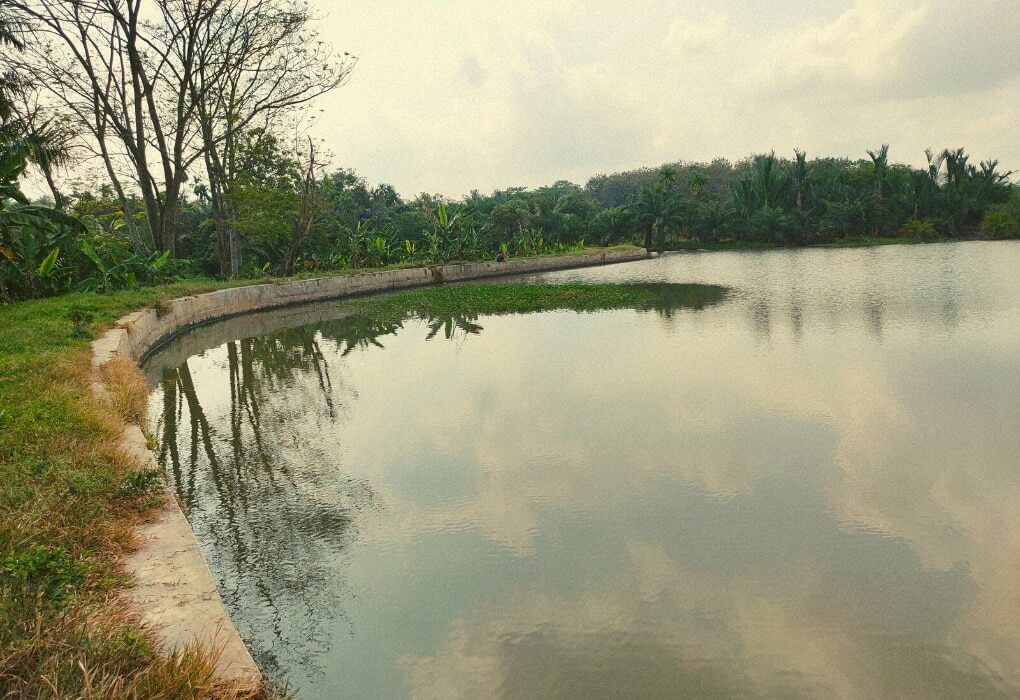
Dams are an excellent spot to use your blade fishing lures. Sauger, white bass, walleye, and other fish migrate toward the dam when the cold water periods arrive.
Often, the fish will bite after you crank the reel the first few times. So you’ll have to get ready to set your hook.
The best presentation is to do a slow retrieve that is quick enough to keep the blade vibrating. You’ll have to mix the retrieve flow with a slower pumping motion for a more violent strike.
Creek Mouths
Creek’s mouths are perfect for using your blade baits for bass. Cast your blade baits to the creek mouth, downriver, and upriver to the shorelines.
It depends on the scope and size of the river where you’re fishing that will determine if you need to be more toward the center of the river channel or not.
Holes
You’ll find deeper water near bridges or the river channel, which can be a great place to go bass fishing.
The best practice is to fish vertically in the holes by lowering the blade baits to the bottom of the home and then jigging them upward.
Bridges
A bridge is one of the primary areas to go fishing for bass. They have eddies, currents, and deep holes. You can choose to cast your blade baits toward the shore or vertically.
It’s best to attempt both sides of the river.
Since the blades are heavy, they fall quickly and cast far.
Therefore, when you cast in the direction of the shore, try to prevent your blade from snagging, so you want to move the blade immediately upon entering the water.
Best Blade Baits for Bass
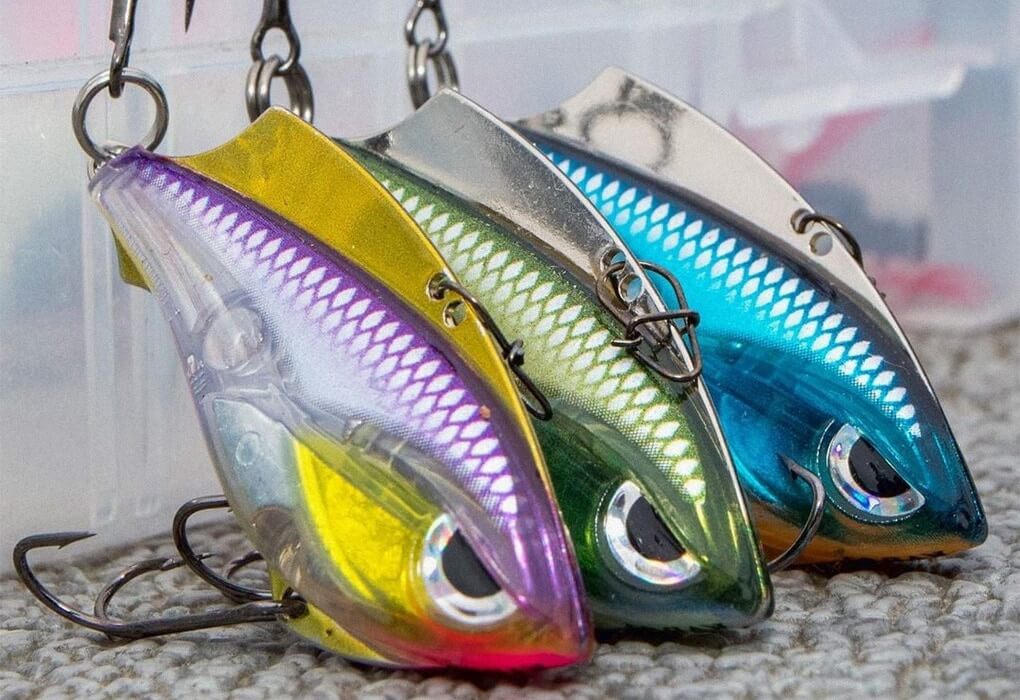
Bass will eat anything as predatory fish. We’ve rounded up a few of the best bass lures based on movement, durability, color, and performance.
Here are our top suggestions:
- Silver Buddy Blade Bait: The Silver Buddy doesn’t tangle and grab the line like other bass lures, and the high vibrations are perfect for small and largemouth bass.
- Heddon Sonar Blade Bait: The Heddon Sonar Blade Bait comes in many colors, and there are three places where you can attach the line so that you can adjust for various water conditions.
- Damiki Vault: The Damiki Vault is perfect for low water temperatures in the winter. You get accurate vibrations that mimic that of a small baitfish and come in multiple colors.
- Jackall Keeburn Blade Bait: Made from circuit board material and standard metal, the Jackal Keeburn is exceptionally durable.
The body vibrates violently, similar to the Binsky Vibrating Blade Bait from Tackle Warehouse. However, the head stays stable while you’re reeling it in.
- Rapala Blade Bait: You strike a balance between plastic and metal with the durability of the Rapala Rap-V. It’s versatile and gives instant vibrations when you lift it from the water.
It also works with various retrieves and depths.
Final Thoughts
When the temperatures drop, it’s time to grab the blade baits in your tackle box, get out on the water and catch winter bass.
The best blade baits for bass give different options for various retrieves and allow you to catch the coveted bass in no time.
How often do you fish during the late fall and winter? Let us know in the comments below!


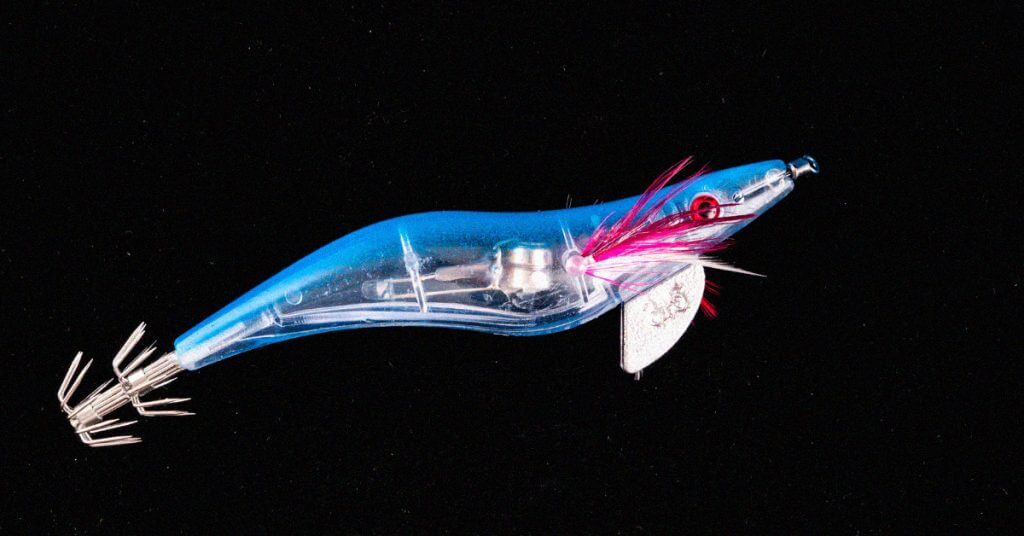

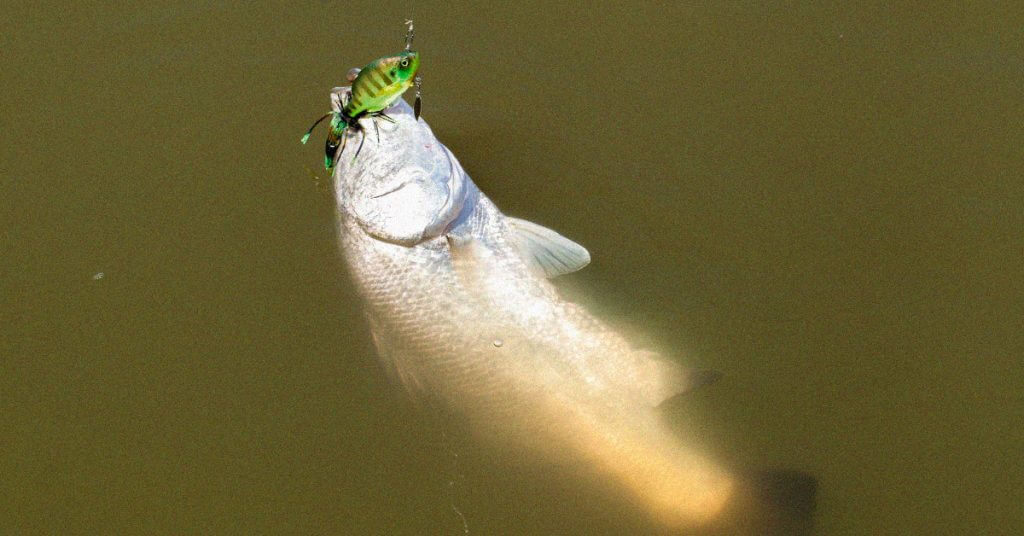
Lake thom-a-lex is a reservoir where I fish. It stays stained to muddy. At present, there is absolutely no clarity. No one has caught anything over the past month. I’m 81 and fish out of kayak. I’m using blade baits but to no avail. I’m confident I will catch a largemouth this winter.
Winter fishing is definitely a game of patience, Gerald! I sure hope I still have your drive to kayak fish when I’m 81!